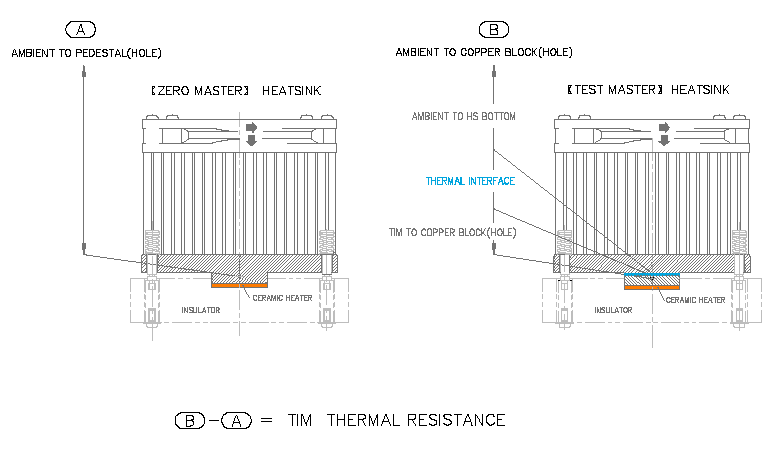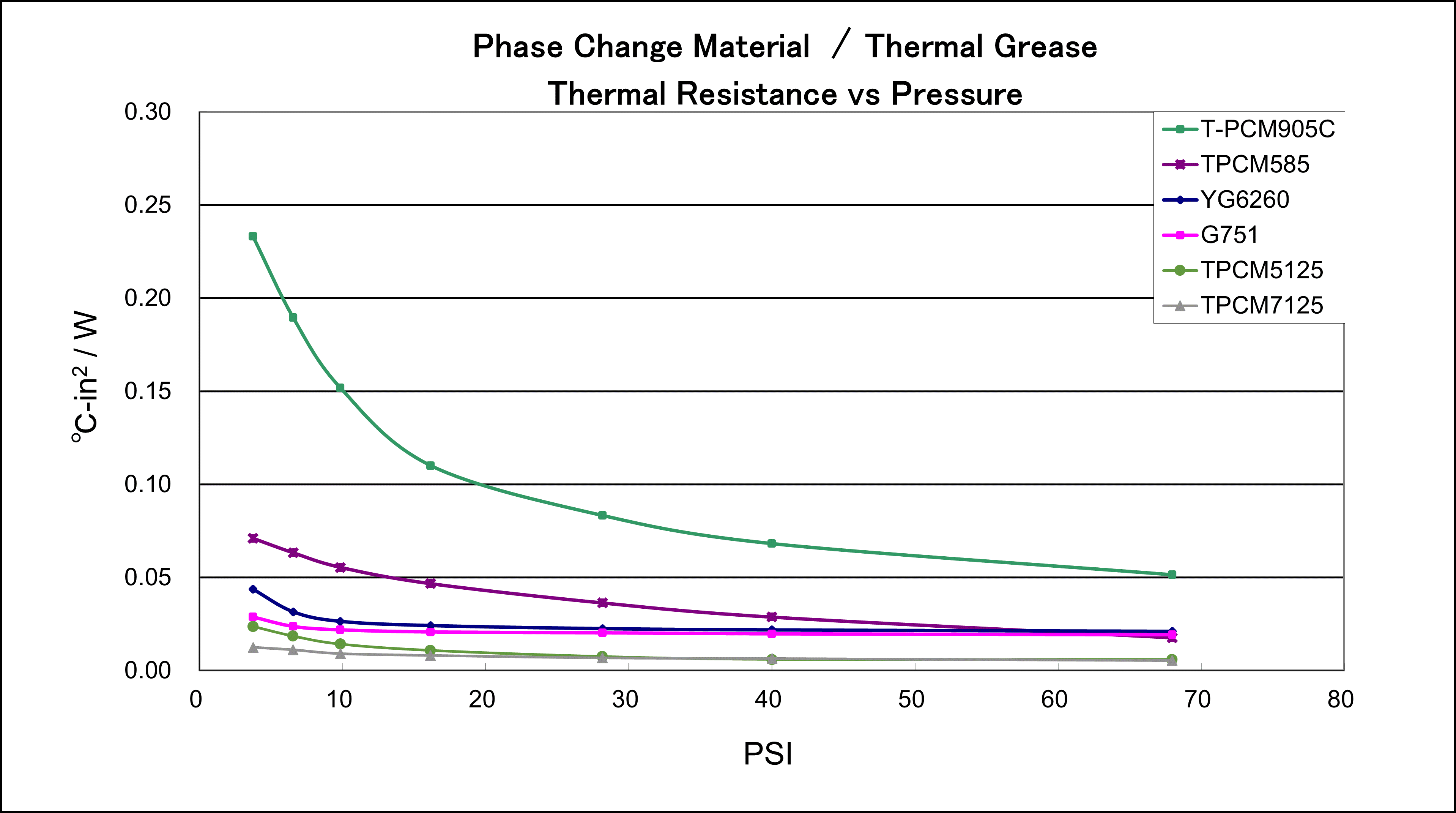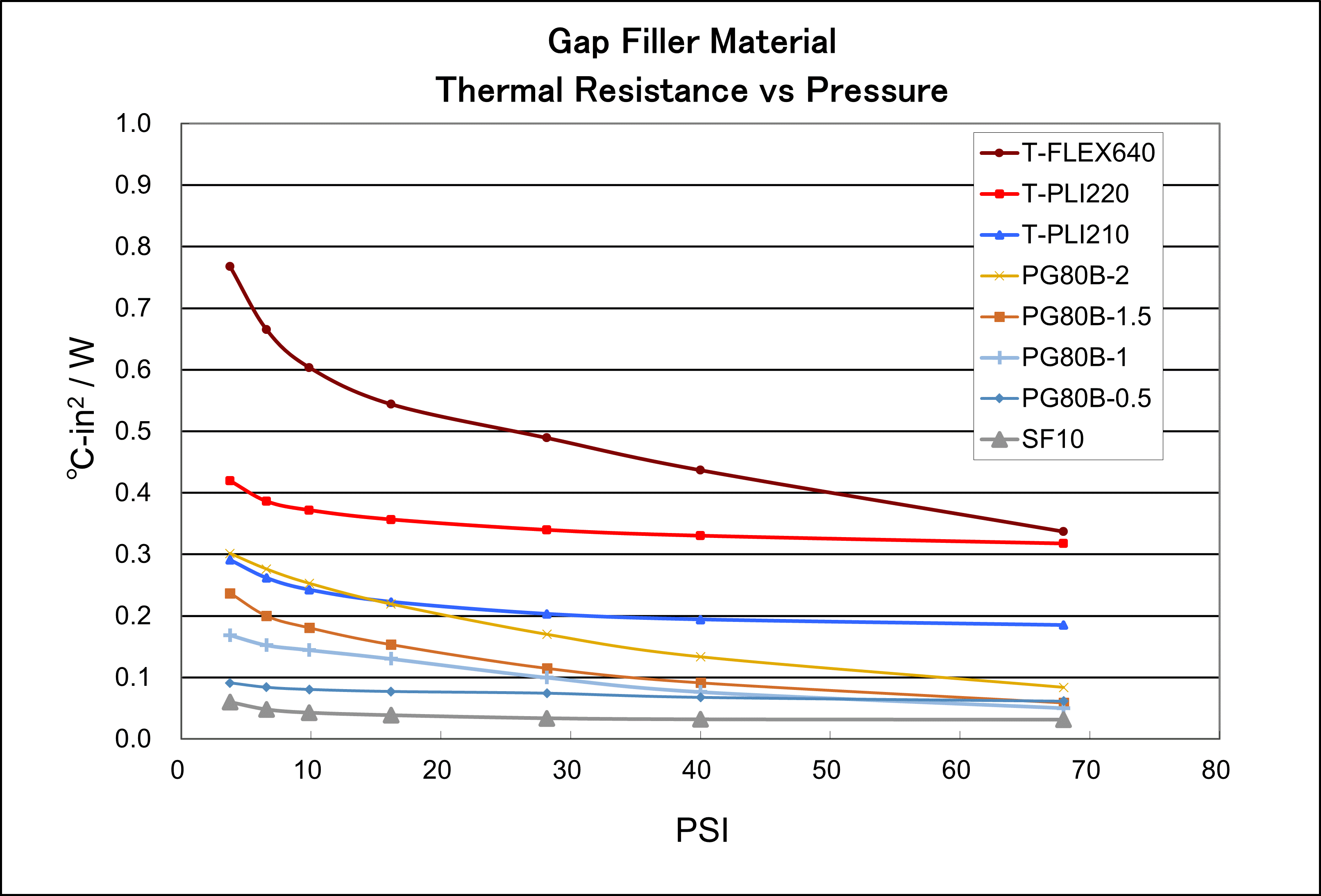Thermal interface material (TIM) fills the small voids and imperfections between the heat sink and heat source to minimize the interface thermal resistance.
There are many types of TIMs available from several vendors in the market. Although each vendor publishes its own product test data, the results depend on the test methods and environment. These conditions can be very different from real world operating conditions and make it difficult to compare TIMs accurately.
In light of this, we tested several TIMs which we offer as standard items. Since many factors will affect TIM performance, actual results will vary. We hope this information will help our customers to select the most appropriate TIM.

Our PRE9060 based heat sink and fan was used as our test vehicle. The heat sink had a pedestal machined from solid heat sink base material. This heat sink was used to generate a reference thermal resistance. The pedestal was then removed and replaced with a plate matching the original pedestal's size and thickness. Different TIMs were placed between the plate and heat sink, and the thermal resistance was again measured. The performance difference between this data and the reference data is the TIM's performance.
The performance of each material was measured at different attachment pressures with multiple test runs done for accuracy. The materials were initially warmed up to ~ 70degC, to ensure that phase change materials changed phase.


The test data is based on our test environment, and is no guarantee of actual thermal performance.
Based on the above data, we can summarize the features of each TIM as follows:
- Phase Change Material
(PCM) (TPCM5125 / TPCM7125)
- Ease of use.
- Uniform thickness and consistent performance.
- Thermal performance is dependant on the attachment pressure/load.
- Low cost.
- Thermal Grease (YG6260
/ G751)
- More difficult to handle and apply when compared to PCM and Gap Filler.
- Superior thermal performance.
- Grease thickness will affect thermal performance.
- Far less sensitive to attachment pressure/load than PCM or Gap Filler.
- Gap Filler (PG80B-0.5 / PG80B-1 / PG80B-1.5 / PG80B-2 /SF10-1 / T-FLEX640 / T-PLI210 /
T-PLI220)
- Ease of use.
- Highly compliant and flexible.
- Suitable for use with mulltiple heat source or components with flatness issues.
- Thermal performance is dependant on attachment pressure/load.
- Thermal performance is inferior to PCM and grease.
- Consistent performance.
- Relatively high cost.
© 2011-2023 Alpha Novatech, Inc.
